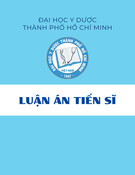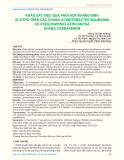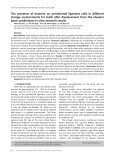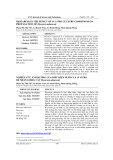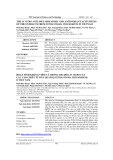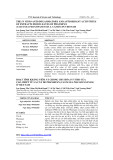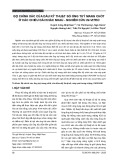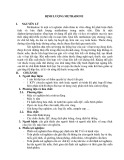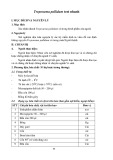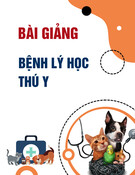
Int.J.Curr.Microbiol.App.Sci (2017) 6(3): 1591-1598
1591
Original Research Article https://doi.org/10.20546/ijcmas.2017.603.183
In vitro Evaluation of Bio-Agents and Fungicides against Foot Rot Pathogen
(Sclerotium rolfsii Sacc.) of Tomato
Sahana N. Banakar*, V.B. Sanath Kumar and A.G. Thejesha
Department of Plant Pathology, College of agriculture, V. C Farm Mandya,
UAS, Bengaluru, India
*Corresponding author
A B S T R A C T
Introduction
Tomato (Solanum lycopersicum L.) is an
important nutritive rich and warm season
vegetable crop grown throughout the
world.Tomato suffers from a number of
fungal, bacterial, nematode and many viral
diseases. The annual loss of vegetable due to
the pathogen is 10 per cent, major loss is due
to the fungal pathogen. Among the
phytopathogenic fungi, disease caused by
Sclerotium rolfsii, a soil borne fungi which
causes foot rot or collar rot of tomato is
gaining a serious status. S. rolfsii is
polyphagous and most destructive soil borne
fungus and was first reported by Rolfs (1892)
as a cause of tomato blight in Florida. Later,
Saccardo (1911) named the fungus as
Sclerotium rolfsii. But, in India the root rot
caused by this pathogen was first reported by
Shaw and Ajrekar (1915) who had isolated
the pathogen from rotting potatoes which they
identified as Rhizoctonia destruens Tassi.
Later studies convinced Ajrekar that the
fungus involved in rotting of potato was
Sclerotium rolfsii but not R. destruens
(Ramakrishnan, 1930). The disease is also
referred as Sclerotium blight, Sclerotium wilt,
southern blight, southern stem rot and white
mold which cause 55-95% mortality of the
crop at seedling stage under condusive
conditions (Gurha and Dubey 1982). Among
the phytopathogenic fungi, disease caused by
Sclerotium rolfsii, a soil borne fungi which
International Journal of Current Microbiology and Applied Sciences
ISSN: 2319-7706 Volume 6 Number 3 (2017) pp. 1591-1598
Journal homepage: http://www.ijcmas.com
Foot rot of tomato is an important disease which causes severe loss in tomato
production. The present study was carried out to evaluate five bioagents and
six fungicides against Sclerotium rolfsii. Among the five antagonists tested the
maximum inhibition was observed in Trichoderma virens (67%) and
contrarily, no inhibition was observed in Bacillus subtilis. Six fungicides viz.,
carbendazim, captan, tebuconozole, copper oxychloride, hexaconozole and
Tebuconazole +Trifloxytrobin at different concentrations (50, 100, 150, 200,
250 and 500 ppm), were tested. Among the tested fungicides, systemic
fungicides like hexaconazole, tebuconozole and combi product, Nativo
(tebuconazole 50% + trifloxystrobin 25%) showed complete inhibition of S.
rolfsii at all the concentration tested.
Keywords
Sclerotium rolfsii,
In vitro, Fungicides,
Bioagents, Dual
culture technique
and poison food
technique.
Accepted:
22 February 2017
Available Online:
20 March 2017
Article Info





